
-
Find the right food for your pet
Take this quiz to see which food may be the best for your furry friend.
Find the right food for your pet
Take this quiz to see which food may be the best for your furry friend.
Featured products
 Adult 7+ Perfect Digestion Chicken, Whole Oats & Brown Rice Recipe Dog Food
Adult 7+ Perfect Digestion Chicken, Whole Oats & Brown Rice Recipe Dog FoodScience Diet's breakthrough nutrition supports ultimate digestive well-being & healthy microbiome for dogs age 7+
Shop Now Adult Healthy Cuisine Roasted Chicken, Carrots & Spinach Stew Dog Food
Adult Healthy Cuisine Roasted Chicken, Carrots & Spinach Stew Dog FoodDelicious roasted chicken paired with tender vegetables in a succulent stew
Shop Now Small & Mini Savory Stew with Chicken & Vegetables Dog Food
Small & Mini Savory Stew with Chicken & Vegetables Dog FoodA delicious complement to the nutrition of Science Diet Small & Mini 7+ dog food
Shop NowFeatured products
 Adult 7+ Tender Tuna Dinner Cat Food
Adult 7+ Tender Tuna Dinner Cat FoodWith delicious chunks in a decadent gravy
Shop Now Adult Savory Entrée Can Variety Pack Cat Food
Adult Savory Entrée Can Variety Pack Cat FoodPrecisely balanced nutrition with the delicious taste of savory minced chicken to help fuel the energy needs of cats during the prime of their life
Shop Now Adult 7+ Senior Vitality Chicken & Vegetable Stew Cat Food
Adult 7+ Senior Vitality Chicken & Vegetable Stew Cat FoodImproves Everyday Ability to Get Up & Go
Shop Now -
Dog
- Dog Tips & Articles
-
Health Category
- Weight
- Food & Environmental Sensitivities
- Urinary
- Digestive
- Joint
- Kidney
-
Life Stage
- Puppy Nutrition
- Adult Nutrition
- Senior Nutrition
Cat
- Cat Tips & Articles
-
Health Category
- Weight
- Skin & Food Sensitivities
- Urinary
- Digestive
- Kidney
-
Life Stage
- Kitten Nutrition
- Adult Nutrition
Featured articles
 Does My Pet Hate Me?
Does My Pet Hate Me?Learn tips for bonding with your pet if you've ever thought, 'My dog doesn't like me, or 'Why do I have a standoffish cat?'
Read More Do Dogs and Cats have Belly Buttons?
Do Dogs and Cats have Belly Buttons?Learn whether cats & dogs have belly buttons like humans, what the function is, and if there are any health concerns associated with it.
Read More Why Are Dogs and Cats So Cute?
Why Are Dogs and Cats So Cute?If waggy puppy dog tails and furry kitten yawns make you swoon, you're not alone. Why are cats so cute? And, dogs too! Let's find out!
Read More -


Cats can be quite vocal and good at communicating their wants and needs, but do cats like when you talk to them? If you talk and talk but feel like your cat doesn't listen, maybe you're just not speaking the right language. Learn how to talk to cats and tell your kitty how much you care.
How to Speak Cat
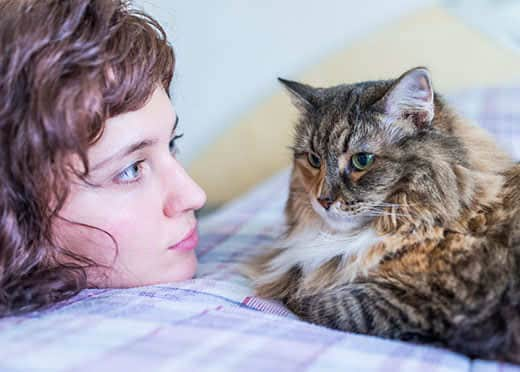 Cats don't usually vocalize with one another, saving those meows, trills and chirps for their human companions, says Catster. Their primary language is body language. They speak with their tails, the position of their ears, their posture and even their facial expressions. With that in mind, here are some ways you can get your kitty to understand you.
Cats don't usually vocalize with one another, saving those meows, trills and chirps for their human companions, says Catster. Their primary language is body language. They speak with their tails, the position of their ears, their posture and even their facial expressions. With that in mind, here are some ways you can get your kitty to understand you.
Match Tone to Command
While cats are fluent in body language, they also understand the tone and pitch of your voice more than your actual words. Using a light, happy voice while telling them to get off the counter or stop scratching will only confuse them into thinking you're pleased with their actions. Match a firm, commanding voice in a lower pitch with commands like "No!" "Stop!" or "Down!" and your kitty will know exactly what you mean. In the same vein, use a higher, happier pitch when praising your kitty, calling them or offering them something exciting like a treat or toy.
Match Gestures to Words
Combining your tone with gestures and motions will really help get your point across. For example, point at the floor or make a downward motion with your hand while commanding your kitty to get off the counter, and wave them toward you or summon them with your index finger while calling them to you.
Be Careful With Eye Contact
Cats don't appreciate a staring contest, says iHeartCats. While they may stare at you to get your attention, returning their stare for too long may be considered a threat. You can tell when your kitty is getting agitated by looking into their eyes; if their pupils become dilated, it can signal excitement or aggression.
Blink for I Love You
While an unblinking stare might be perceived as a threat, closed eyes are a sign of trust between you and your kitty, which to them is the ultimate declaration of love. You can let your kitty know how much they mean to you by making eye contact and slowly closing your eyes for a moment before opening them again.
Imitate Head and Nose Bumps
Another way your kitty shows affection is by bumping you with their head or nose. Gently returning those head bumps is likely to get a purr of pleasure in response. You can initiate a nose bump by extending a knuckle at your cat's level and inviting them to give it a sniff.


Tasty Tips
How to Tell if Your Cat Is Listening
 Do cats like when you talk to them? It likely depends on the message you're sending. But it's not hard to know if they're listening. Here's how to tell if you've made a connection.
Do cats like when you talk to them? It likely depends on the message you're sending. But it's not hard to know if they're listening. Here's how to tell if you've made a connection.
If your cat returns your head butt and/or rubs their face on you, you'll know they're happy to see you.
If your cat turns around and shows you their butt, they're not disrespecting you; it's actually a friendly greeting, says BeChewy.
If your kitty responds to your affectionate overtures with a purr, you'll know they understand and return your love.
If your kitty returns your slow blink, you'll know they trust you with their life.
If your cat bites, scratches, growls or twitches their tail in agitation, you'll know they don't like whatever you're doing, or they're becoming overstimulated and need space.
If your cat responds to baby talk with their own vocalizations, it's an invitation to keep the conversation going.
If your kitty rolls over and exposes their tummy, it's not an invitation for a belly rub, but it could be a sign that they're comfortable enough to be vulnerable with you.
Now that you know how to talk to cats, it's time to try out what you've learned on your own feline friend, who will no doubt be surprised and delighted when you start speaking their love language.


Jean Marie Bauhaus is a pet parent, pet blogger, and novelist from Tulsa, Oklahoma, where she usually writes under the supervision of a lapful of fur babies.
Related products
Related articles
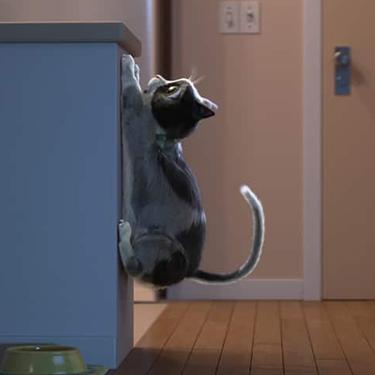
What is the best food for an overweight cat? Learn all about weight control food for cats, including what's in it and how it works.
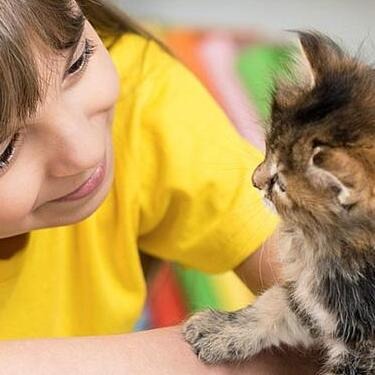
Discover how to train your cat, starting with very basic first steps that both reward good behavior and discourage the bad.
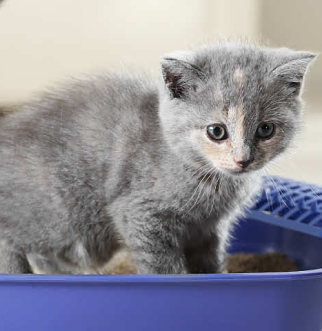
Cats are naturally very clean and chances are your kitten will already have learned how to use the litter box from her mother before she comes to live with you.
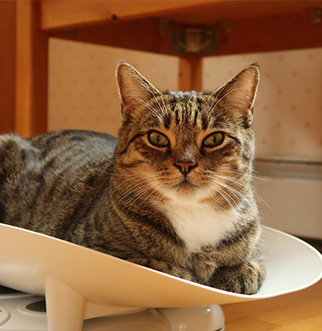
How do you get a cat to lose weight? Learn all about cat foods for weight loss, including how to choose weight control cat food and exercise tips.

Put your cat on a diet without them knowing
Our low calorie formula helps you control your cat's weight. It's packed with high-quality protein for building lean muscles, and made with purposeful ingredients for a flavorful, nutritious meal. Clinically proven antioxidants, Vitamin C+E, help promote a healthy immune system.
Put your cat on a diet without them knowing
Our low calorie formula helps you control your cat's weight. It's packed with high-quality protein for building lean muscles, and made with purposeful ingredients for a flavorful, nutritious meal. Clinically proven antioxidants, Vitamin C+E, help promote a healthy immune system.

